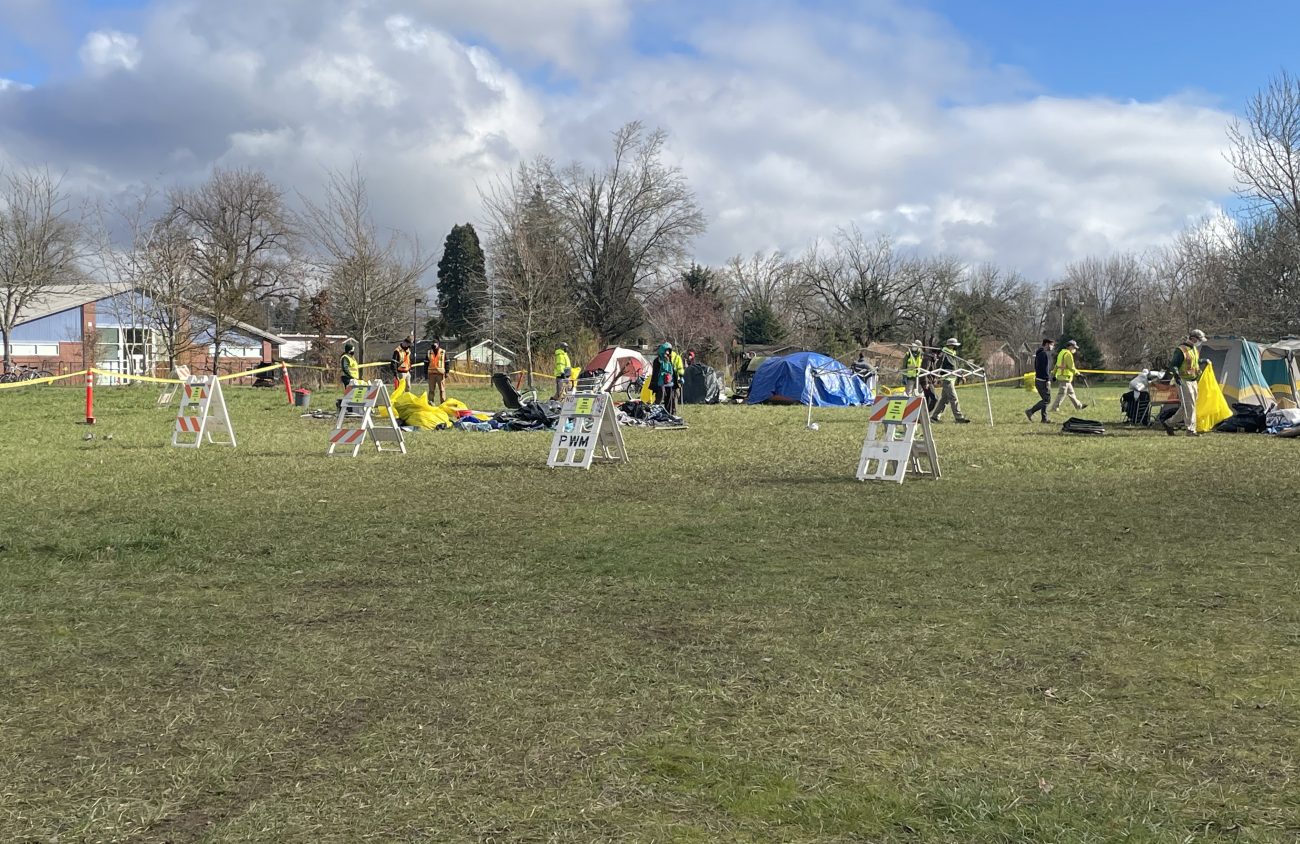There are already limited places for the unhoused to set up camp legally in Eugene, and now Westmoreland Park, located off 18th Avenue and Chambers Street, is no longer an option. Citing new temporary camping rules, the city of Eugene cleared tents at the park on Feb. 24.
The city has updated its COVID-19 camping regulations multiple times since the COVID pandemic began in March 2020. Over the past year, advocates for the homeless have objected to any clearing or “sweeping” of camps during the pandemic. Stopping sweeps is also recommended by the CDC. Though the city says there are other places for the unhoused to legally set up camps, advocates say they are frustrated with the evolving rules.
Marm, a local advocate who does not want to use her full name out of fear of retribution, was at the sweep and helped individuals pack up their belongings and tents. She says she is frustrated that the rules keep changing for those who want to shelter-in-place safely.
“I’m super disappointed because the city keeps changing the rules,” Marm says. She adds that the situation is personal for her. In 2009 she left school with a six figures student debt and started working a $15 an hour job at the University of Oregon. She says she very well could have ended up homeless.
“It’s extremely personal for me,” she says. “Unless you are part of the über-wealthy group, many people are one severe illness or accident away from being homeless.”
Unhoused people were first told on Feb. 5 they were violating temporary camping rules at Westmoreland Park because they were too close to the Conestoga-style shelters that sit on park property as a part of the city’s Rest Stop Program.
The rule states that camps must be at least 300 feet away from Rest Stops and other transitional housing locations such as Opportunity Village. This is in addition to the other regulations such as listed on the city website. Previously, it was prohibited to set up camps at neighborhood parks in general, but no park was specified.
The campers were given a flyer on Feb. 5, but advocates came and helped them move their tents farther away from the Rest Stop. It turns out, the flyer wasn’t accurate.
Kelly Shadwick, community engagement manager for the city, says that initially the city came to let campers know they couldn’t stay, which is done by putting up notices of camp clean-ups and checking off a reason why the camp needed to be cleared or if a rule was broken. The only thing checked off was that the camp was too close to the Rest Stop.
“The right thing wasn’t checked. Initially campers just moved 300 feet from the Rest Stop,” she says. But when the camp moved it was also close to the Amazon Creek and the rules also state that camping is not allowed within 200 feet of waterways.
The city had to return and re-explain why campers couldn’t stay, Shadwick says, and they amended the regulations so the unhoused are not allowed to camp at Westmoreland Park, regardless of where they set up camp.
Shadwick says several days ago, the city administered a 48-hour notice and then a 24-hour notice. On Feb. 24, city workers came to clear the camp. Shadwick says usually most people will indicate that anything left behind is garbage and can be thrown away. Some told the city they couldn’t move their stuff in time, but didn’t want it thrown away. Shadwick says they store it at their Parks and Open Space personal property retrieval on Garfield Street.
Shadwick says that while some people are camping in places where it is prohibited, many people are doing fine and are camping correctly.
For this specific camp, she says there were too many things going on at once. The tents were set up in a field behind Cesar Chavez Elementary School, near residential homes, the Rest Stop and Amazon Creek.
“There were just too many things going on,” Shadwick says. “There are already two sanctioned sites for the homeless here.”
Others are still concerned about the changing rules, and say that places people are allowed to camp at are becoming far too crowded — which makes social distancing difficult and leads to fights.
Nate Mitchell, another homeless advocate, says that it becomes difficult when there are too many people and not enough room for them to camp. Washington-Jefferson Park is one example.
“There is just not enough space,” Mitchell says.
